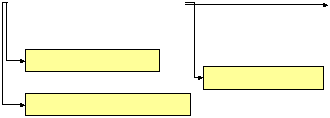
Hierarchy of Word Objects








| Before you can
do anything with an object, you must return a reference to the object. To do
this, you must build an expression that gains access to one object in the
object model and then uses properties or methods to move up or down through
the object hierarchy until you get to the object you want to work with. The
properties and methods you use to return the object you start from and to
move from one object to another are called object accessors, or just
accessors. As you build an expression with accessors to return a reference to
an object, keep the following guidelines in mind. |
|
| A common place
to gain access to the object model is the toplevel object, which is usually
the Application object. To drill down to an object from the toplevel object
in a hierarchy, you must step down through all the objects above it in the
hierarchy, using accessors to return one object from another. For example,
the |
|
| Documents
property of the Word Application object returns the Documents collection
object, which represents all open document . There are other shortcut
accessors — such as the ActiveWindow, ActiveDocument, ActiveWorksheet, or |
|
| ActiveCell
properties — that return a direct reference to an active part of an
application |